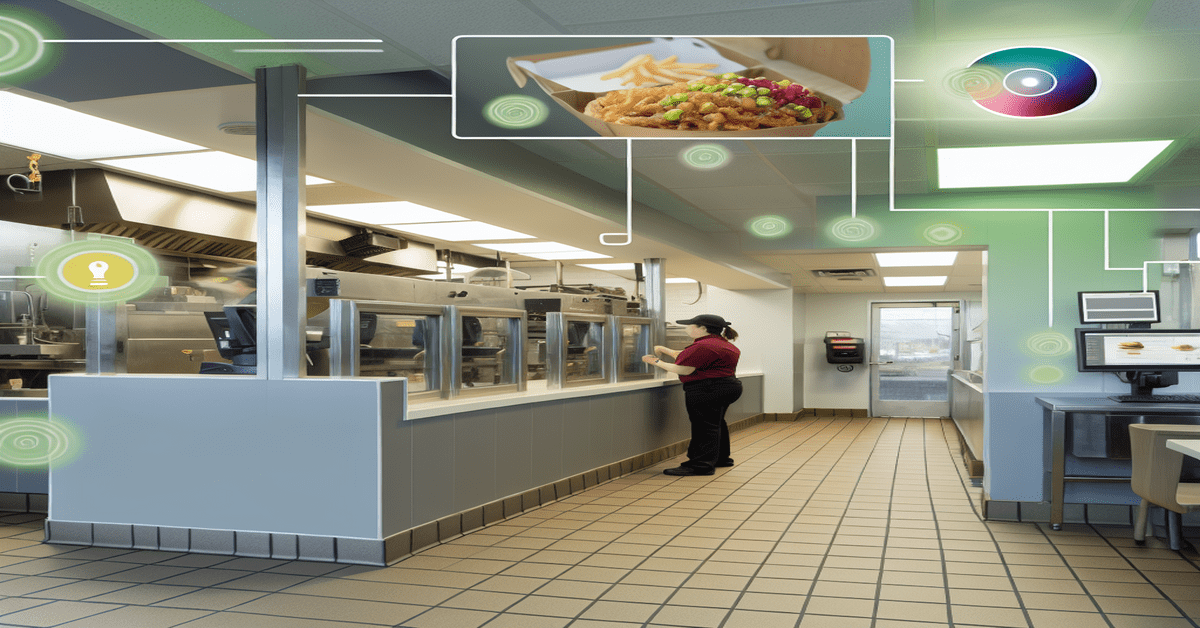McDonald’s Embraces AI and Edge Computing Revolution
In a groundbreaking move, McDonald’s is revolutionizing the fast-food industry by integrating cutting-edge AI and edge computing solutions across its vast network of U.S. restaurants. This bold initiative aims to enhance operational efficiency, improve customer experience, and streamline employee tasks, setting a new standard for the future of quick-service dining.
Unleashing the Power of AI
McDonald’s is no stranger to innovation, and their latest endeavor involves harnessing the power of artificial intelligence to transform various aspects of their operations. From AI-driven drive-throughs to internet-connected kitchen equipment and AI tools for managers, the company is leaving no stone unturned in its pursuit of technological advancement[1][2][3].
One of the most exciting developments is the implementation of computer vision technology and voice AI at drive-throughs. By leveraging these cutting-edge tools, McDonald’s aims to significantly improve order accuracy and reduce wait times, ultimately enhancing the overall customer experience[2][4].
Edge Computing: The Game Changer
In addition to AI, McDonald’s is embracing the potential of edge computing, a technology that processes data locally within each restaurant. By bringing computing power closer to the source of data, edge computing enables real-time insights into kitchen performance and helps predict equipment failures before they occur[2][3].
This proactive approach to maintenance is expected to significantly reduce downtime and associated costs. Imagine a scenario where restaurant managers receive alerts well before equipment breaks down, allowing them to schedule repairs during off-peak hours and minimize disruptions to operations. The benefits of edge computing are clear, and McDonald’s is at the forefront of this technological revolution.
Elevating the Customer Experience
McDonald’s understands that in today’s competitive landscape, customer loyalty is paramount. To foster a deeper connection with its patrons, the company is exploring personalized promotions based on customer data. By leveraging AI algorithms to analyze purchasing patterns and preferences, McDonald’s aims to deliver targeted offers and incentives that resonate with individual customers[2][4].
This data-driven approach is expected to significantly boost membership in the company’s loyalty program, with a goal of reaching 250 million members by 2027, up from the current 175 million. By offering a more personalized and rewarding experience, McDonald’s is poised to strengthen its relationship with customers and maintain its position as a leader in the fast-food industry.
Empowering Employees Through Automation
While AI and edge computing are often associated with customer-facing improvements, McDonald’s recognizes the value of these technologies in supporting its workforce. By automating routine tasks and streamlining restaurant operations, the company aims to reduce stress on employees and allow them to focus on delivering exceptional service[1][2].
Imagine a future where AI-powered systems handle inventory management, order processing, and even food preparation, freeing up employees to engage with customers and create memorable dining experiences. This symbiotic relationship between technology and human talent has the potential to revolutionize the fast-food industry and set a new standard for employee satisfaction and retention.
Navigating Challenges and Looking Ahead
Despite the immense potential of AI and edge computing, McDonald’s acknowledges the challenges that come with implementing these technologies across its vast network of restaurants. High implementation costs and logistical complexities are significant hurdles that the company must navigate as it rolls out these cutting-edge solutions[1][2].
However, McDonald’s is not alone in this journey. Other fast-food giants, such as Wendy’s and Yum Brands, are also embracing AI to enhance their operations and customer experiences[5]. As the industry collectively pushes the boundaries of technological innovation, the future of fast food looks brighter than ever.
The Future is Now
McDonald’s bold embrace of AI and edge computing serves as a testament to the company’s commitment to innovation and customer satisfaction. By leveraging these transformative technologies, McDonald’s is not only improving its own operations but also setting a new standard for the entire fast-food industry.
As we witness the unfolding of this technological revolution, it is clear that the future of dining is here. With AI-powered drive-throughs, predictive maintenance, personalized promotions, and streamlined operations, McDonald’s is redefining what it means to be a fast-food restaurant in the 21st century.
The question now is not whether AI and edge computing will transform the industry, but rather how quickly other restaurants will follow suit. As customers increasingly demand seamless, personalized, and efficient experiences, those who fail to adapt risk being left behind.
So the next time you visit a McDonald’s restaurant, take a moment to appreciate the cutting-edge technology that powers your dining experience. From the moment you place your order to the final bite of your meal, AI and edge computing are working tirelessly behind the scenes to ensure that your visit is nothing short of extraordinary.
#McDonalds #AI #EdgeComputing #FastFood #Innovation
-> Original article and inspiration provided by MarketScreener
-> Connect with one of our AI Strategists today at Opahl Technologies


